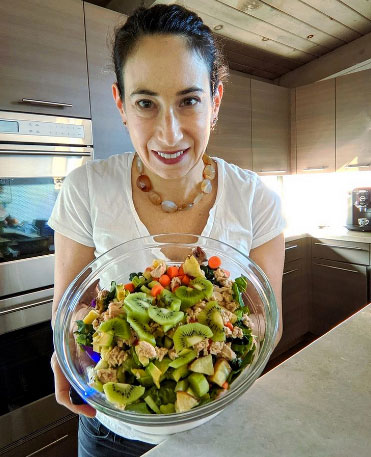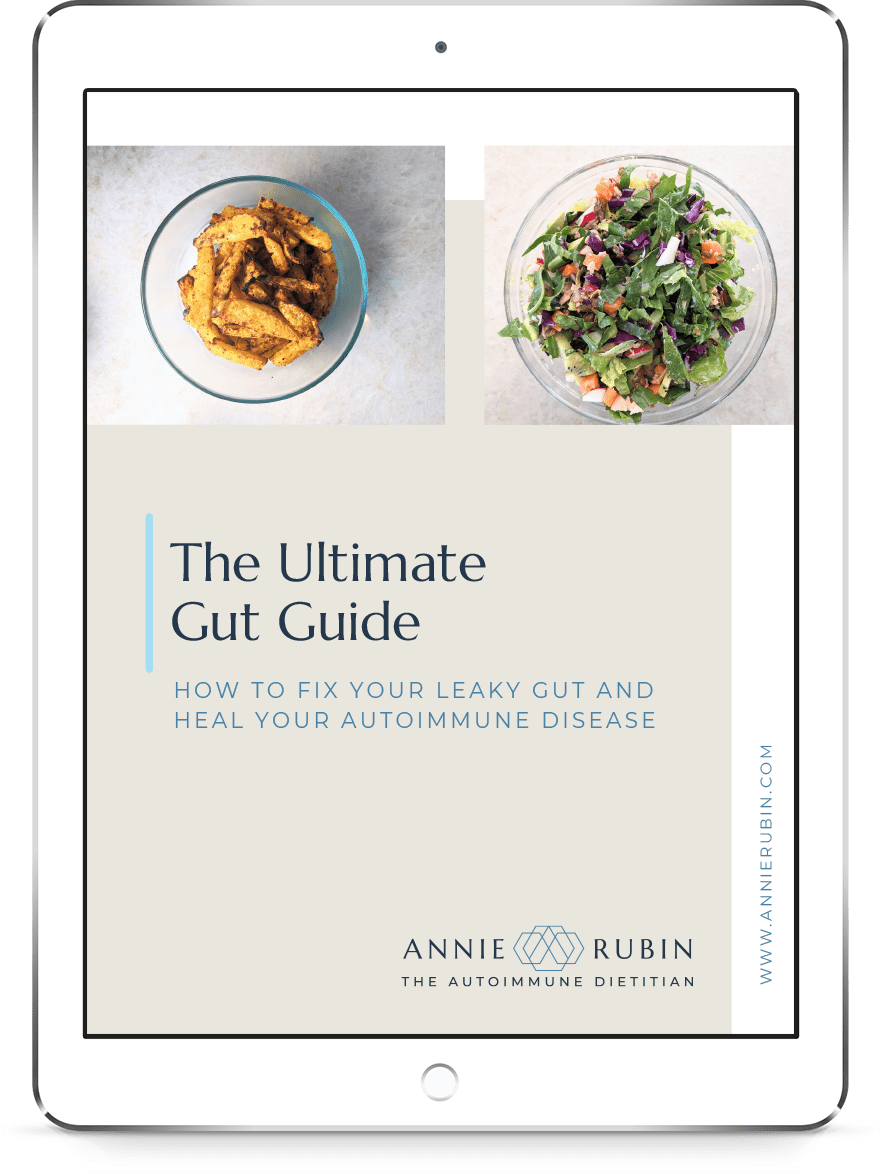 Elimination diets are the gold standard when it comes to uncovering food sensitivities. This is important for autoimmune diseases because most people with autoimmune diseases have food sensitivities due to intestinal permeability. Food sensitivities trigger inflammatory cascades that can make your autoimmune disease worse. Therefore, doing an elimination diet can be very helpful for your healing process. Here’s what they are and how to do them properly.
Elimination diets are the gold standard when it comes to uncovering food sensitivities. This is important for autoimmune diseases because most people with autoimmune diseases have food sensitivities due to intestinal permeability. Food sensitivities trigger inflammatory cascades that can make your autoimmune disease worse. Therefore, doing an elimination diet can be very helpful for your healing process. Here’s what they are and how to do them properly.
What are Food Sensitivities?
Before I jump into elimination diets, let’s first briefly mention food sensitivities. One way food sensitivities happen is when the intestinal barrier is compromised. This is known as intestinal permeability or leaky gut. Leaky gut is one of the commonalities across many autoimmune diseases. It can exacerbate or trigger these diseases to become active. When the intestinal lining is not intact, harmful things can sneak through the lining and trigger an inflammatory reaction. In the case of food sensitivities, undigested food particles can make their way through the lining and trigger a reaction. This is because the immune system doesn’t recognize these particles and thinks they are “invaders” or harmful to the body.
Once the body mounts an attack on these food particles, it remembers them. Every time you eat that food, your body will launch an inflammatory response against it.
What are Elimination Diets?
Elimination diets remove potentially harmful or inflammatory foods from your diet so your body stops attacking the food you eat. The “harmful” food is removed for a period of time and then reintroduced to see if your tolerance to that food has changed. There are a number of different types of elimination diets you can try. The most well known elimination diet for autoimmune disease is the Autoimmune Protocol, or AIP.
The goal with any elimination diet is symptom improvement. Do your symptoms improve after the removal of those foods? If yes, then it’s time to figure out which foods are causing you issues. This is known as the reintroduction phase. Adding back one new food at a time helps you figure out which foods might be an issue for you. This can be a long and tedious process, so patience is key for this phase. It is generally recommended to work with a dietitian so you can decipher any potential reactions and plan out the best course of action for reintroducing foods.
How to Best Execute Elimination Diets
The first step to any elimination diet is figuring out which foods to remove and for how long. Once that’s established, pick a time to do this diet. Ideally you want to do this separate from any travel or upcoming social engagements, as eating out can be a challenge. When you are ready to do the diet, plan on being 100% compliant for the elimination phase. This will give you the best results for symptom resolution. When you feel like your symptoms have improved enough to tell a difference between the before diet and after diet period, then you can start reintroducing foods.
The reintroduction phase also needs a well thought out plan. Have an order in which you plan to reintroduce the foods. It’s best to go from the potentially least to most reactive.
Helpful Tips forElimination Diets
Here are a few helpful tips to make your elimination diet successful:
- For best results, make a point to be as compliant as possible with the elimination phase. Remember, it’s a short term diet only and should not be longer than the specified time frame.
- Keep a symptom journal to track how you feel. Many times the improvements aren’t as obvious as you would expect, especially within the first week or so.
- Make a plan BEFORE you start the elimination phase. Have an idea of what your meals will look like, and stock up on any snacks you might need. Meal prepping in advance is a great way to get prepared.
- Try to limit social engagements, especially if your elimination phase is very limiting. Eating out just opens up the possibility for unwanted ingredients or cross contamination.
- Ask your community for help. Whether it’s a partner, family or friends. Tell them what you are doing and why. They will be more than willing to pitch in and help if they know about it.
Elimination diets can be incredibly effective for autoimmune diseases. If you need help starting or finishing an elimination diet, please for help. Additionally, follow me on the socials: Instagram, Facebook and YouTube, for more helpful tips to optimize your nutrition and lifestyle for autoimmune diseases.


